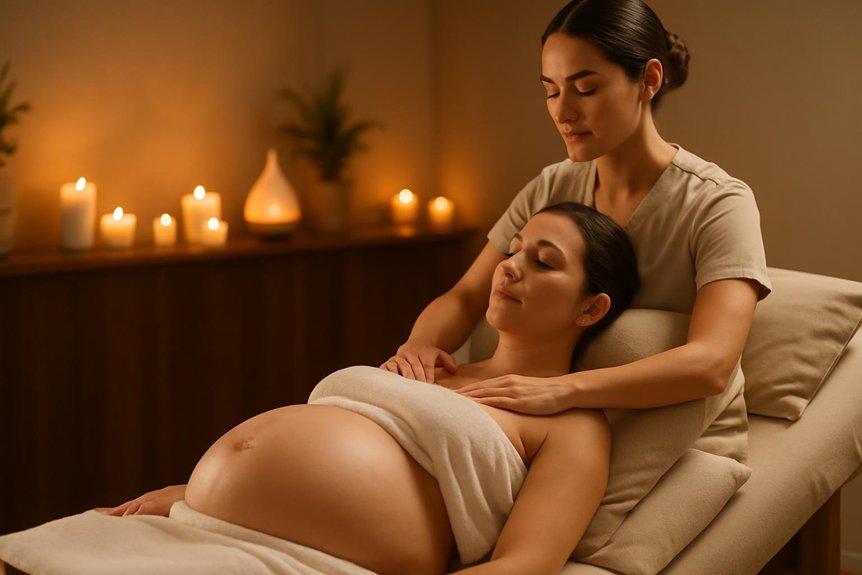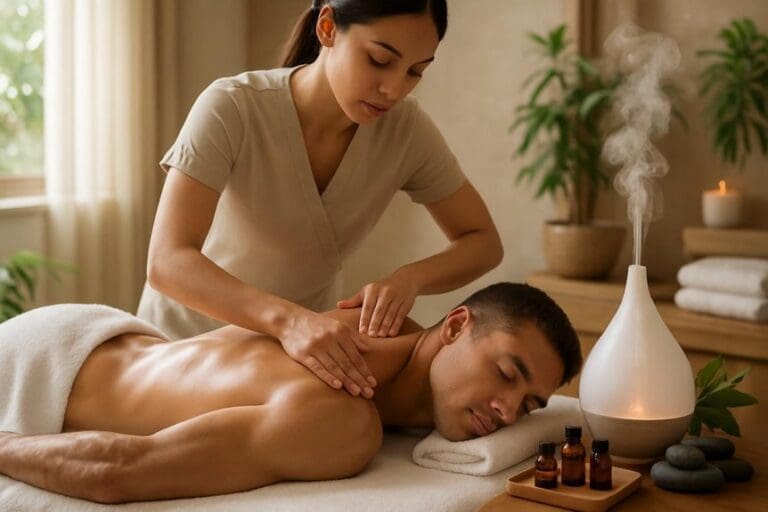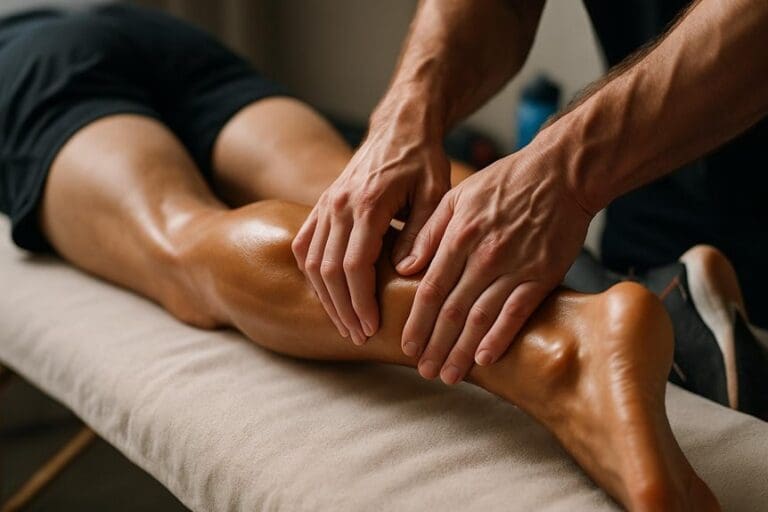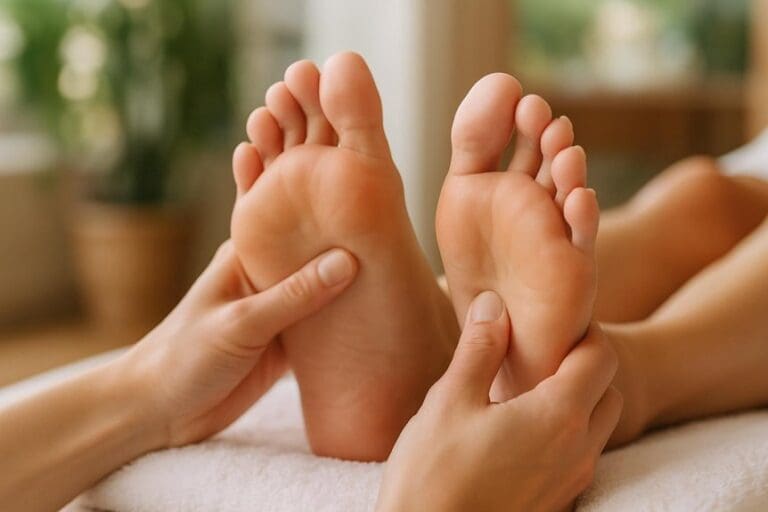Handheld and electric massagers can be safe for pregnant women if used carefully, avoiding sensitive areas such as the abdomen, lower back, and inner thighs, and limiting pressure and heat. Devices should be used briefly, on low settings, and only after consultation with a healthcare provider, especially for high-risk pregnancies. Proper technique and sensitive use can help relieve tension, but caution is essential as certain points may stimulate contractions. Further details explain safe practices and beneficial techniques for expectant mothers.
Understanding Pregnancy and Physical Changes
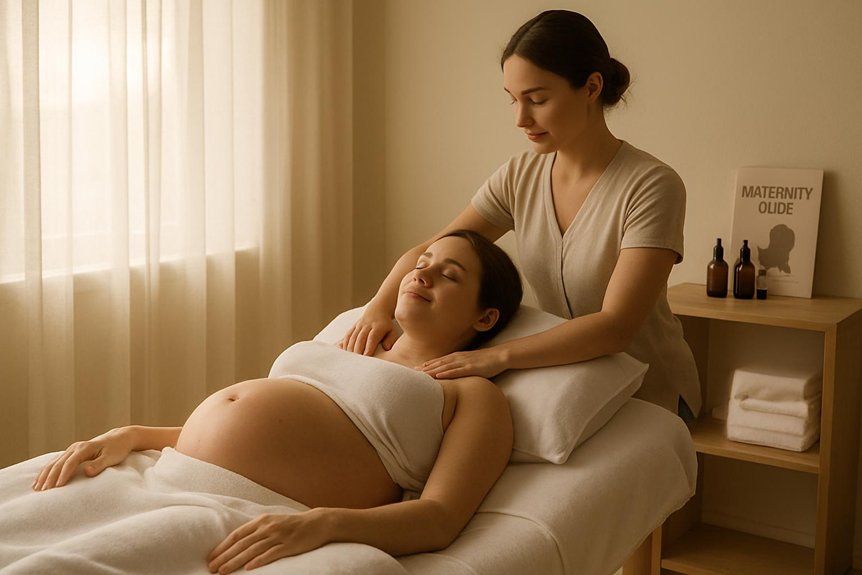
During pregnancy, the body undergoes a series of complex physiological and anatomical changes that can affect musculoskeletal structure, circulation, and hormonal balance. Increased levels of relaxin and progesterone soften ligaments and joints, making them more susceptible to strain.
The shifting center of gravity, as the uterus expands, places additional pressure on the lower back, hips, and legs.
Circulatory adjustments, including increased blood volume and changes in venous return, may contribute to swelling—especially in the lower extremities.
Hormonal fluctuations can also influence mood and sensitivity to touch.
At Spa & Massage, therapists recognize these unique changes and adapt treatment approaches to guarantee both safety and comfort.
Understanding these factors is essential when considering any wellness intervention, including the use of massage devices during pregnancy. Many expecting mothers benefit from pregnancy massage, which is specially tailored to address these physiological changes and promote comfort.
Common Concerns About Massage Devices During Pregnancy
Although massage devices are widely promoted for relaxation and pain relief, their use during pregnancy raises valid clinical concerns. During pregnancy, physiological changes—such as increased blood flow, hormone shifts, and heightened sensitivity—make expectant mothers more vulnerable to certain risks.
One common concern is the potential for overstimulation or excessive pressure from massage devices, which can inadvertently trigger contractions or discomfort, particularly in sensitive areas like the lower back or abdomen.
There is also apprehension about the use of heat-producing devices, as excessive warmth may affect maternal core temperature.
At Spa & Massage, therapists emphasise the importance of tailored, gentle approaches and avoiding unsupervised device use. These concerns underscore why professional guidance and caution are essential when considering massage devices during pregnancy.
Safety of Handheld and Electric Massagers for Expectant Mothers
Given the heightened sensitivities and physiological changes that occur throughout pregnancy, evaluating the safety of handheld and electric massagers becomes a priority for expectant mothers seeking comfort and relief.
Clinical evidence suggests that, when used appropriately and on safe areas, these devices can provide gentle relief from muscle tension and stress. However, Spa & Massage therapists emphasise the importance of low-intensity settings and brief durations to avoid overstimulation.
Temperature regulation is also vital, as excessive heat may increase discomfort or risk. Expectant mothers are advised to consult their healthcare provider before using any massage device, especially if experiencing high-risk pregnancy or underlying health concerns.
Ultimately, a personalised and cautious approach, guided by professional insight, ensures the wellbeing of both mother and baby during this transformative time.
Areas to Avoid When Using Massagers in Pregnancy
While massage can offer significant relief to expectant mothers, specific anatomical areas must be avoided to minimise potential risks. At Spa & Massage, therapists are vigilant in steering clear of the abdomen, especially in the first trimester, as excessive pressure here may stimulate sensitive uterine tissue.
The lower back and sacral region are approached with care to avoid affecting the delicate ligaments supporting pregnancy. Direct massage over the ankles and the area between the thumb and forefinger is also discouraged, as these points are associated with acupressure zones believed to influence uterine activity.
The inner thighs are treated with caution due to increased risk of blood clots during pregnancy. Such careful targeting ensures a nurturing, safe environment, while maximising the therapeutic benefits of massage for expectant clients.
Recommended Massage Techniques for Pregnant Women
Because pregnancy brings unique physiological changes, massage techniques must be carefully adapted to guarantee both safety and effectiveness. Gentle, slow strokes—such as effleurage—are recommended to soothe muscle tension and foster relaxation without overstimulating sensitive areas.
At Spa & Massage, therapists use side-lying or semi-reclined positions to ensure peak comfort and reduce pressure on the abdomen and lower back.
Special attention is given to supporting joints and avoiding deep tissue pressure, particularly in the legs, to minimize any risk of blood clot formation.
Light kneading and rhythmic movements are often applied to areas prone to discomfort, such as the shoulders and lower back.
Our therapists recommend unscented, hypoallergenic oils to nurture sensitive skin, always prioritizing the nurturing needs of both mother and baby.
The Role of Professional Prenatal Massage at Spa & Massage
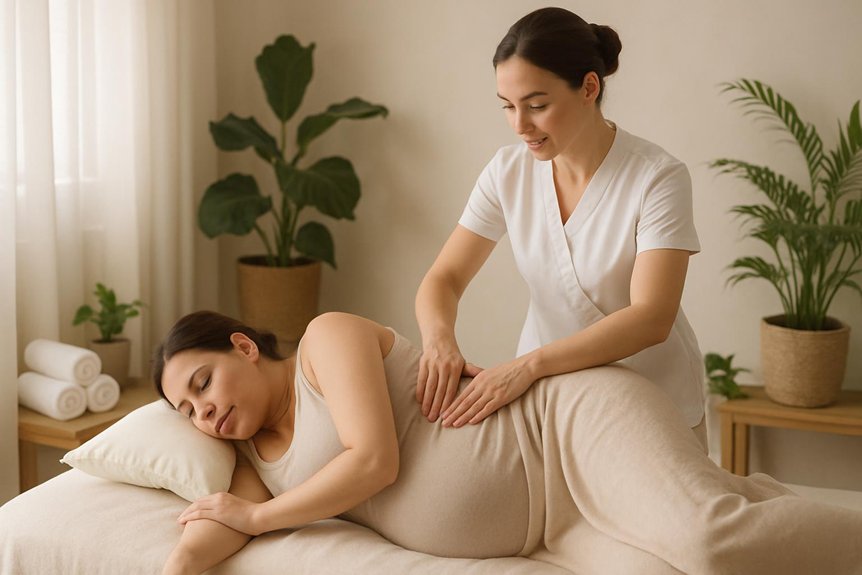
At Spa & Massage, professional prenatal massage is delivered by therapists with specialist training in prenatal care. This ensures techniques are both effective and appropriate for each stage of pregnancy.
Treatment sessions are carefully tailored to prioritize client comfort and safety. Adjustments are made for positioning and pressure as needed.
This approach aligns with current evidence-based recommendations for supporting maternal well-being through massage therapy.
Specialist Training and Techniques
Recognising the unique physiological changes experienced during pregnancy, Spa & Massage guarantees that only therapists with specialist training deliver prenatal massage treatments. These therapists undergo rigorous education to understand the anatomical and hormonal shifts that occur during gestation.
Evidence-based protocols guide their hands, ensuring they apply techniques proven safe for both mother and child. Professionals avoid high-risk pressure points and adapt massage methods suited specifically for each trimester, always prioritising the client’s comfort and well-being.
Spa & Massage emphasises gentle, nurturing touch, steering clear of deep tissue work or vigorous manipulation that could compromise safety.
Clients benefit from a calm, intimate environment, supported by therapists who know how to respond to pregnancy-related concerns with clinical precision and care.
This commitment reflects best practices in maternal wellness.
Tailored Comfort and Safety
While pregnancy brings about profound physical and emotional changes, the importance of tailored comfort and safety during massage cannot be overstated. At Spa & Massage, therapists with specialist training in pregnancy care design each session to accommodate the unique needs of expectant mothers.
Evidence suggests that positioning, pressure, and technique must be carefully adapted during pregnancy to protect both mother and baby. Therapists at the clinic use supportive pillows and gentle, purposeful movements, ensuring ideal safety and relaxation.
High-quality, hypoallergenic oils—chosen for both comfort and skin sensitivity—are utilised. Every treatment is guided by medical best practices, including ongoing assessment of client feedback and wellbeing.
This cautious, individualised approach fosters trust, allowing mothers to experience relief and connection without compromising their safety.
Benefits of Prenatal Massage for Mother and Baby
Prenatal massage, when performed by qualified therapists, is associated with a range of clinically recognised benefits for both mother and baby. Research indicates that massage during pregnancy may assist in reducing back and joint pain, easing muscle tension, and improving circulation.
These effects can help manage swelling and support restful sleep. Additionally, prenatal massage has been shown to lower levels of the stress hormone cortisol, which may contribute to improved mood and emotional wellbeing for the mother.
At Spa & Massage, therapists utilise gentle, tailored techniques and carefully selected oils to guarantee comfort and safety. Enhanced blood flow and relaxation during massage may also promote ideal oxygen and nutrient delivery to the baby.
All treatments are provided in a nurturing environment, with sensitivity to each expectant mother’s unique needs.
Aftercare Tips Following This Massage
Following a maternity massage, it is advisable to engage in gentle stretches and allow time for rest to support ideal recovery.
Spa & Massage therapists recommend adequate hydration and continued self-care to help maintain the massage’s benefits and promote overall wellbeing.
These aftercare strategies are based on best practices for maternal comfort and safety.
Gentle Stretches and Rest
How can clients maximise the benefits of prenatal massage once their session concludes? Spa & Massage therapists recommend integrating gentle stretches and prioritising rest immediately after treatment.
Evidence suggests that light stretching—such as neck rolls, shoulder shrugs, or gentle hip rotations—can help maintain improved circulation and flexibility achieved during the session. These movements should be performed slowly and only within a comfortable range, always attentive to the body’s signals.
Following massage, rest is equally important; lying on the left side with supportive pillows may optimise comfort and blood flow.
At Spa & Massage, clients are encouraged to avoid strenuous activities post-massage, allowing the body time to absorb therapeutic effects.
This combination of gentle movement and mindful rest fosters lasting relaxation and nurtures maternal wellbeing.
Hydration and Self-Care
Ideal post-massage recovery often hinges on proper hydration and attentive self-care. After a massage session at Spa & Massage, therapists advise clients to drink water soon after their session. This supports the body’s natural processes, aiding in the removal of metabolic byproducts released during massage.
Adequate hydration may also reduce the risk of post-massage soreness and promote comfortable circulation.
In addition, gentle self-care is emphasized. Clients are encouraged to rest following treatment and to remain attuned to any new sensations or changes in their wellbeing.
Our therapists recommend light, nourishing meals and mindful movement if comfortable. Should any discomfort persist, contacting a healthcare provider is advised.
At Spa & Massage, individualized aftercare guidance is always provided to ensure the client’s ongoing comfort and safety.
When to Consult a Specialist Before Using Massagers
Although massage therapy can offer significant relief and relaxation during pregnancy, certain medical circumstances require careful consideration before using massagers.
Women experiencing high-risk pregnancies, preeclampsia, placenta previa, deep vein thrombosis, or unexplained pain should always consult their obstetrician or midwife before beginning any massage regimen, including self-massage devices.
At Spa & Massage, therapists emphasize the importance of personalized assessment to ensure each treatment is safe and appropriate for the client’s specific needs.
Sudden swelling, persistent headaches, or abdominal pain are also signals to seek medical advice prior to massage.
By maintaining open communication with healthcare providers, expectant mothers can experience the soothing benefits of massage while minimizing potential risks.
Professional guidance ensures that every massage session supports both maternal well-being and baby’s safety.
Conclusion
In summary, while many massagers can be safely used during pregnancy with appropriate precautions, professional guidance is essential. Specifically, a 2019 study found that prenatal massage reduced anxiety and back pain in over 75% of pregnant participants. Expectant mothers should avoid certain areas and always consult a healthcare provider or certified prenatal massage therapist. With evidence-based care, such as that offered at Spa & Massage, pregnant women can experience safe and effective relief from discomfort.
